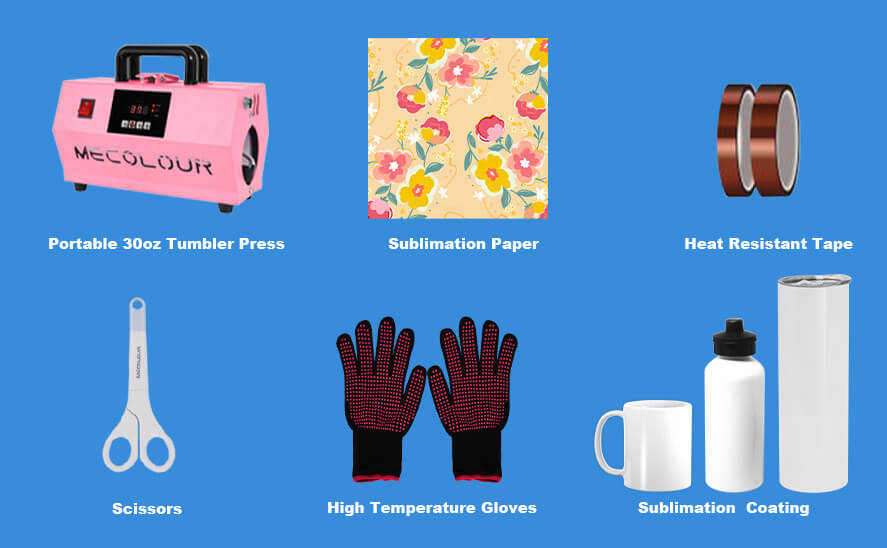Tumbler Heat Press Problems and Solutions

Tumbler heat presses are a popular tool for transferring designs onto cylindrical objects like water bottles, mugs, and tumblers. They offer convenience and efficiency in creating personalized items, but like any equipment, they can encounter various issues during operation. In this blog post, we will discuss some common issues that arise when using a heat press machine and provide solutions to help you overcome the obstacles and achieve successful results with your roller heat press.
Introduction to Tumbler Heat Presses
Tumbler heat presses are specialized machines designed to apply heat and pressure evenly onto cylindrical surfaces, allowing for the transfer of designs or graphics onto items such as tumblers, bottles, and cups. These presses typically consist of heating elements, pressure adjustment mechanisms, and rotational functions to ensure uniform heat distribution and precise application.
Common Problems Encountered
Problem 1: Uneven or Patchy Heat Transfer
One of the most common problems beginners face when using a tumbler heat press is achieving an uneven or patchy heat transfer. This can result in an unsightly and inconsistent design on the tumbler.
Solution: To address this issue, make sure that you are applying even pressure and heat to the tumbler during the heat transfer process. Ensure that the tumbler is centered properly in the heat press and that the pressure is evenly distributed. Additionally, consider using a heat-resistant tape to secure the design in place during the transfer process.
Problem 2: Insufficient Pressure
Insufficient pressure during the pressing process can result in incomplete transfers or distorted designs. This issue may arise from incorrect pressure settings or worn-out pressure adjustment mechanisms.
Solution: Check and adjust the pressure settings of the heat press according to the thickness and material of the tumbler. Ensure that the pressure is evenly distributed across the entire surface to facilitate uniform transfers.
Problem 3: Transfer Paper Slippage
Transfer paper slippage can occur when the design shifts or moves during the pressing process, leading to misaligned or blurred images on the tumbler surface. Inadequate adhesion or improper handling of the transfer paper can contribute to this problem.

Necessary items
Solution: Choose high-quality transfer paper specifically designed for tumbler heat pressing to minimize the risk of slippage and ensure vibrant, long-lasting transfers. Properly secure the transfer paper onto the tumbler surface to prevent shifting during the pressing process.
Problem 4: Wrinkling or Misalignment of the Design
Another issue beginners may encounter is wrinkling or misalignment of the design on the tumbler. This can happen when the design shifts during the heat transfer process or when the tumbler is not positioned correctly.
Solution: To prevent wrinkling or misalignment, take extra care when positioning the design on the tumbler. Use alignment guides or markers to ensure that the design is placed accurately. Additionally, consider using a heat-resistant adhesive spray to secure the design in place before transferring the heat.
Problem 5: Fading or Peeling of the Design
Fading or peeling of the design is a common problem that beginners may face when using a tumbler heat press. This can happen due to inadequate heat or pressure during the transfer process.
Solution: To prevent fading or peeling, make sure that you are using the correct temperature and pressure settings recommended for the specific type of material and design. It is crucial to follow the manufacturer’s guidelines for the heat press machine and the heat transfer materials. Additionally, consider using high-quality heat transfer vinyl or sublimation ink for a more durable and long-lasting design.
Problem 6: Heat Press Machine Malfunction
Sometimes, beginners may encounter issues with the heat press machine itself, such as temperature fluctuations, uneven heating, or malfunctioning controls. These problems can significantly impact the quality of the heat transfer.
Solution: If you experience any issues with your heat press machine, refer to the manufacturer’s instructions for troubleshooting. Ensure that the machine is properly calibrated and that all settings are correctly adjusted. If the problem persists, contact the manufacturer or seek professional assistance for repairs.
Problem 7: Lack of Experience and Knowledge
Lack of experience and knowledge in using a tumbler heat press can result in various challenges, including difficulty in mastering the correct technique, understanding proper heat and pressure settings, or troubleshooting common issues.
Solution: To overcome this problem, invest time in learning and practicing the proper techniques for using a tumbler heat press. Watch tutorials, read user manuals, and seek advice from experienced users or online communities. Practice on scrap materials before working on valuable tumblers to gain confidence and improve your skills.
How To Use Mecolour 30oz Tumbler Heat Press Machine?
Maintenance Tips for Tumbler Heat Presses
Cleaning Regularly
Keep the tumbler heat press clean and free from debris to prevent interference with the pressing process. Wipe down the heating elements, platens, and pressure adjustment mechanisms regularly using a soft, lint-free cloth.
Checking for Wear and Tear
Periodically inspect the components of the tumbler heat press for signs of wear and tear, such as damaged heating elements or worn-out pressure springs. Replace any worn or damaged parts to maintain optimal performance.
Lubricating Moving Parts
Apply lubricant to the moving parts of the heat press, such as hinges and rotational mechanisms, to ensure smooth operation and prevent friction-related issues. Use a lubricant recommended by the manufacturer to avoid damage to the equipment.
Tumbler heat presses are valuable tools for creating custom-designed tumblers and other cylindrical objects, but they can encounter various problems during operation. By understanding the common issues and implementing effective solutions, users can optimize the performance of their heat presses and achieve consistent, high-quality results.Remember to take your time, be patient, and continuously improve your skills to overcome any hurdles you may face along the way.

















